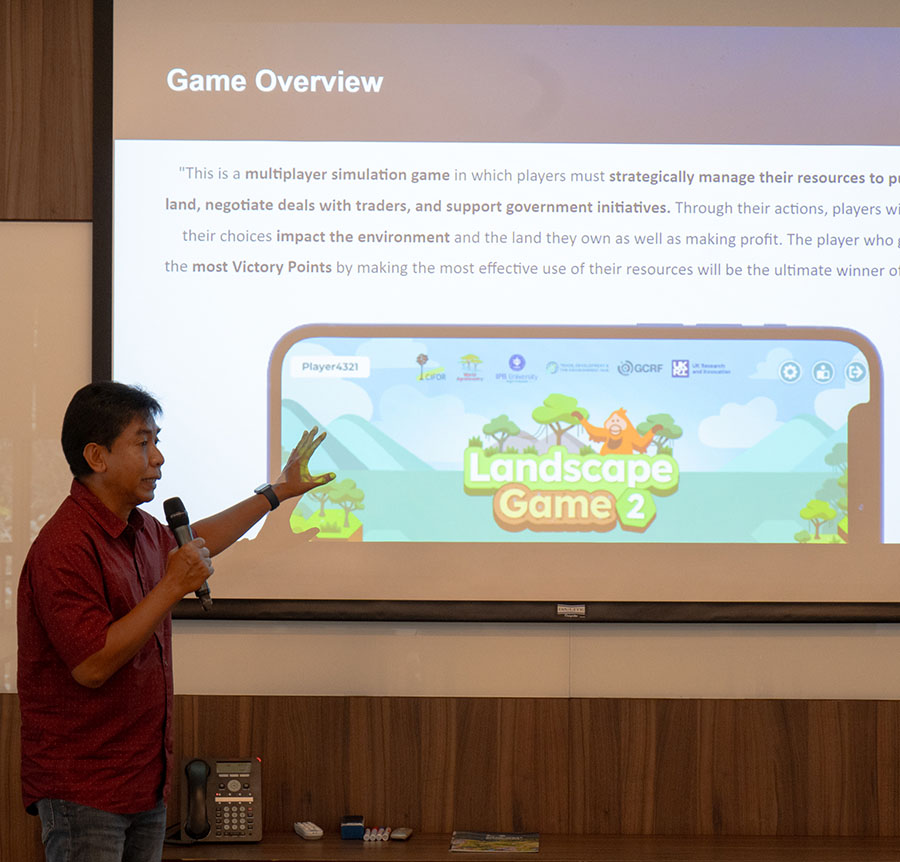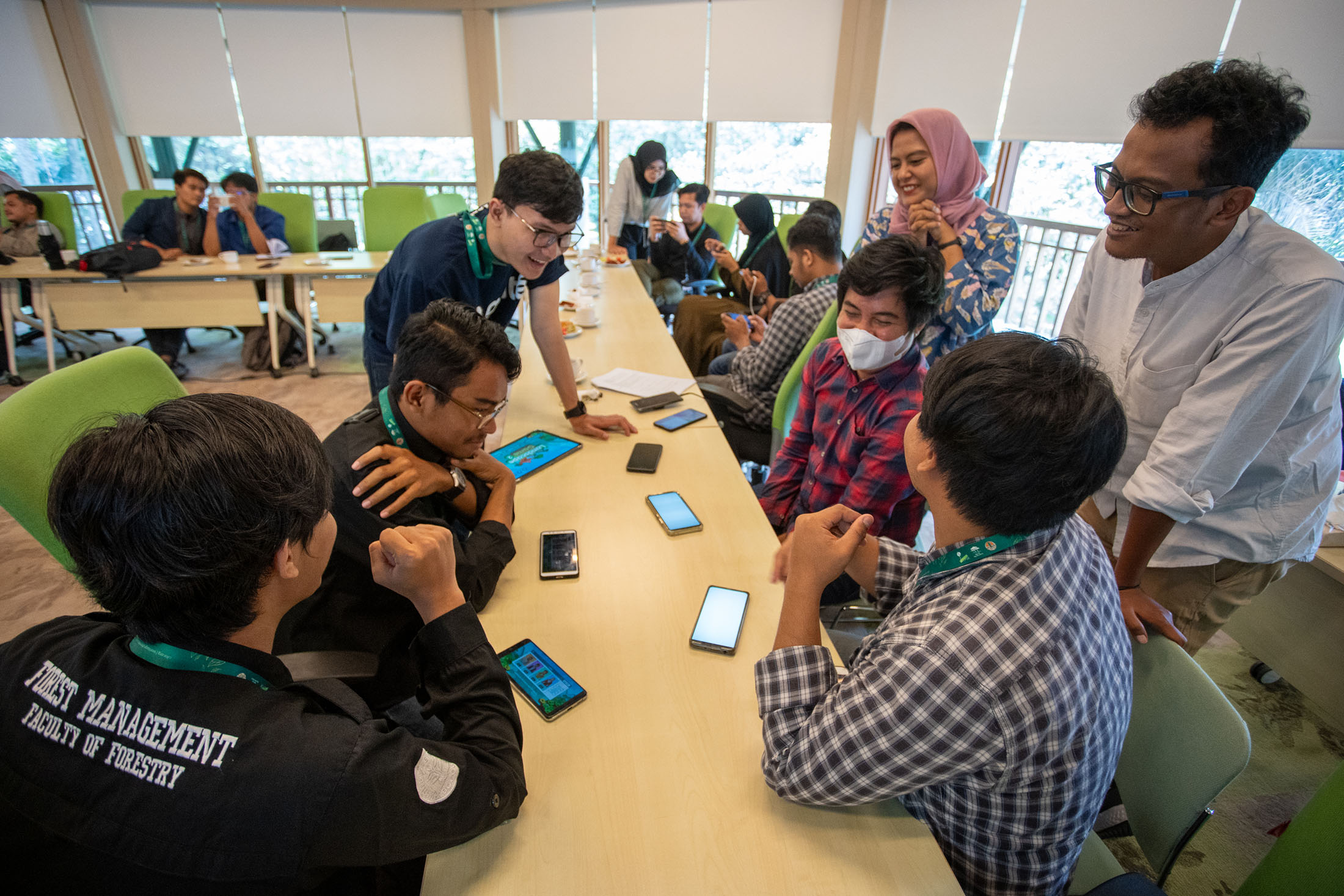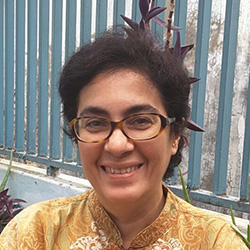We want you to share Forests News content, which is licensed under Creative Commons Attribution-NonCommercial-ShareAlike 4.0 International (CC BY-NC-SA 4.0). This means you are free to redistribute our material for non-commercial purposes. All we ask is that you give Forests News appropriate credit and link to the original Forests News content, indicate if changes were made, and distribute your contributions under the same Creative Commons license. You must notify Forests News if you repost, reprint or reuse our materials by contacting forestsnews@cifor-icraf.org.
Playing it out: New digital game

Innovative tools that educate and engage the global population are crucial in an era marked by rapid environmental changes and increasing ecological challenges. Into this milieu, Landscape Game 2 emerges as a groundbreaking blend of entertainment and education designed to simulate complex landscape management issues in a dynamic, interactive format.
The digital strategy game, developed through a collaboration between the Center for International Forestry Research and World Agroforestry (CIFOR-ICRAF) and Bogor Agricultural University (IPB) in collaboration with Agate Studio, offers insights into sustainable landscape management practices while connecting players across the globe.


Conceived as a board game in 2008, the first edition of Landscape Game was a practical educational tool funded by the European Union and developed in partnership with the French Agricultural Research Centre for International Development (CIRAD). Over the years, its popularity necessitated evolution, and the digital version (Landscape Game 2) was born.
Drawing from iconic strategy games like Monopoly and SimCity, Landscape Game 2 incorporates real-world economics, agriculture, and urban planning elements, engaging players in the multifaceted aspects of landscape management. It not only entertains but also educates, focusing on sustainable land utilization, balancing economic and environmental goals, and managing natural disasters through strategic planning and execution.
The game offers a unique platform where players assume the roles of policymakers, conservationists, and land managers. The digital landscape includes a variety of ecosystems, each with distinct natural characteristics such as waterways, topography, and climatic conditions. Players navigate these terrains, optimizing land use while balancing economic benefits and environmental conservation. The game is designed around several key objectives: maintaining carbon credits above a minimum threshold to prevent ecological disasters, maximizing land productivity, and achieving economic sustainability.
The game mechanics are straightforward yet strategic. Players begin by selecting a landscape and setting preferences for turn limits and operational timings. Each turn is divided into three phases: Reveal, Action, and Result, where players bid for land, develop properties, and sell commodities. The game’s policy challenges and global market demands sharpen the competitive edge, requiring players to adapt swiftly to changing environmental policies and commodity prices. The process also connects players worldwide, fostering a collaborative environment for exchanging strategies and knowledge. This feature is crucial in cultivating a broader understanding of global ecological issues and reinforcing the necessity for collective action in landscape management.
Landscape Game 2 educates through experiential learning. “It is timely; it connects people globally and provides a profound understanding of the landscape issues we face today,” said Herry Purnomo, a senior scientist at CIFOR-ICRAF. “Last night, I turned on my television, I saw floods in Demak and Semarang, on the north coast of Java,” he said. “Then I saw a landslide in West Sumatra. Last week I saw [forest] fires in California. It is time to learn why natural disasters happen.”


The game models real-life scenarios that highlight the consequences of poor land management and the benefits of sustainable practices. Integrating AI and internet connectivity, the game offers a realistic simulation of market dynamics and ecological responses, making it a state-of-the-art tool for understanding and addressing the global climate crisis.
“Together, the whole world is fighting against the climate crisis, and this game is a way to understand why the crisis is happening – and how to mitigate it,” said Purnomo. “This is the internet era, and it’s time to harness the power of technology.”
Acknowledgements
Landscape Game 2 is funded by UK Research and Innovation’s Global Challenges Research Fund and supported by contributions from the Walmart Foundation, among other contributors. The game is available for download in selected regions and is compatible across various digital platforms, ensuring broad accessibility and impact.
Story development: Nabiha Shahab | Video production: Aris Sanjaya | Web design: Gusdiyanto | Coordinator: Budhy Kristanty
We want you to share Forests News content, which is licensed under Creative Commons Attribution-NonCommercial-ShareAlike 4.0 International (CC BY-NC-SA 4.0). This means you are free to redistribute our material for non-commercial purposes. All we ask is that you give Forests News appropriate credit and link to the original Forests News content, indicate if changes were made, and distribute your contributions under the same Creative Commons license. You must notify Forests News if you repost, reprint or reuse our materials by contacting forestsnews@cifor-icraf.org.



